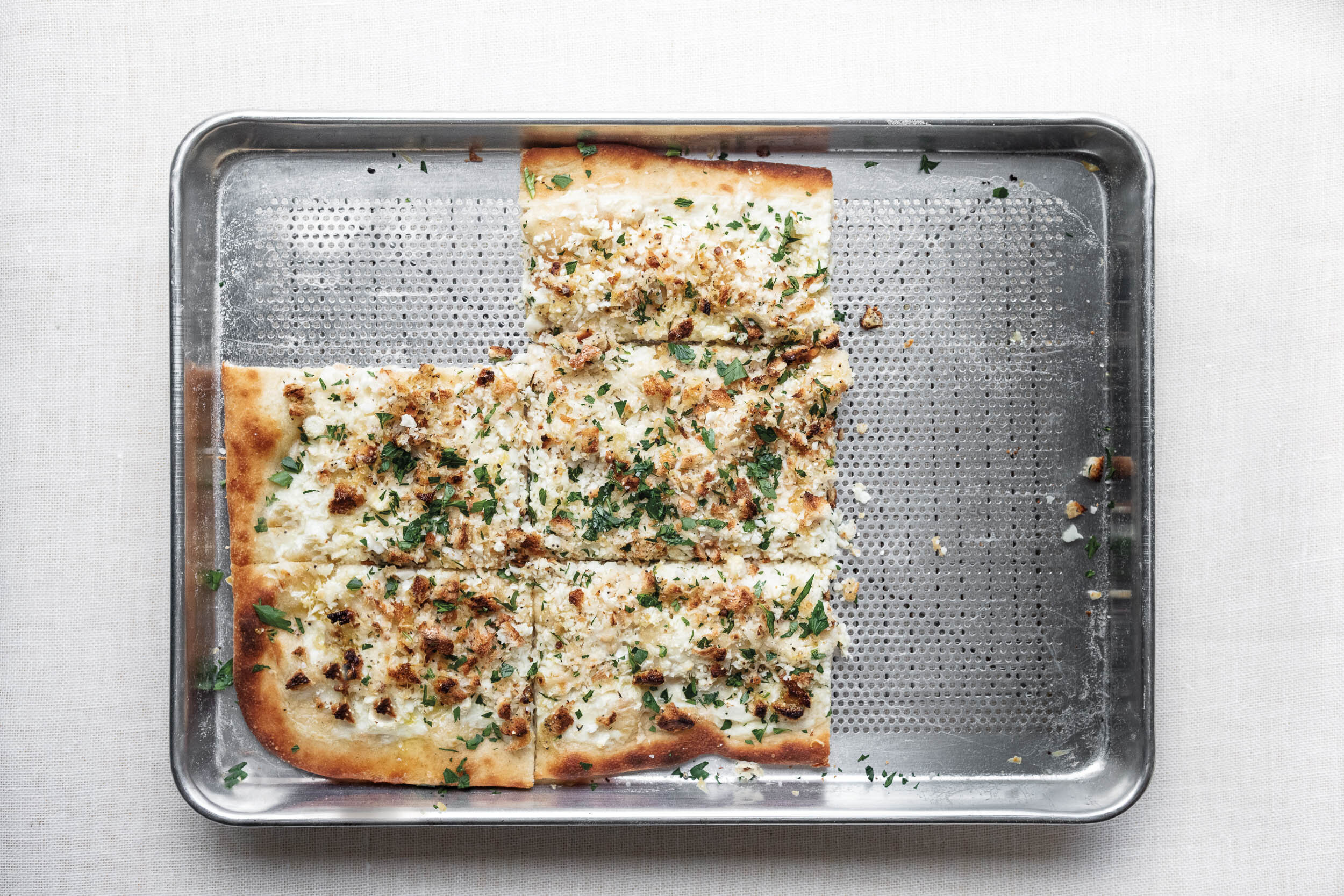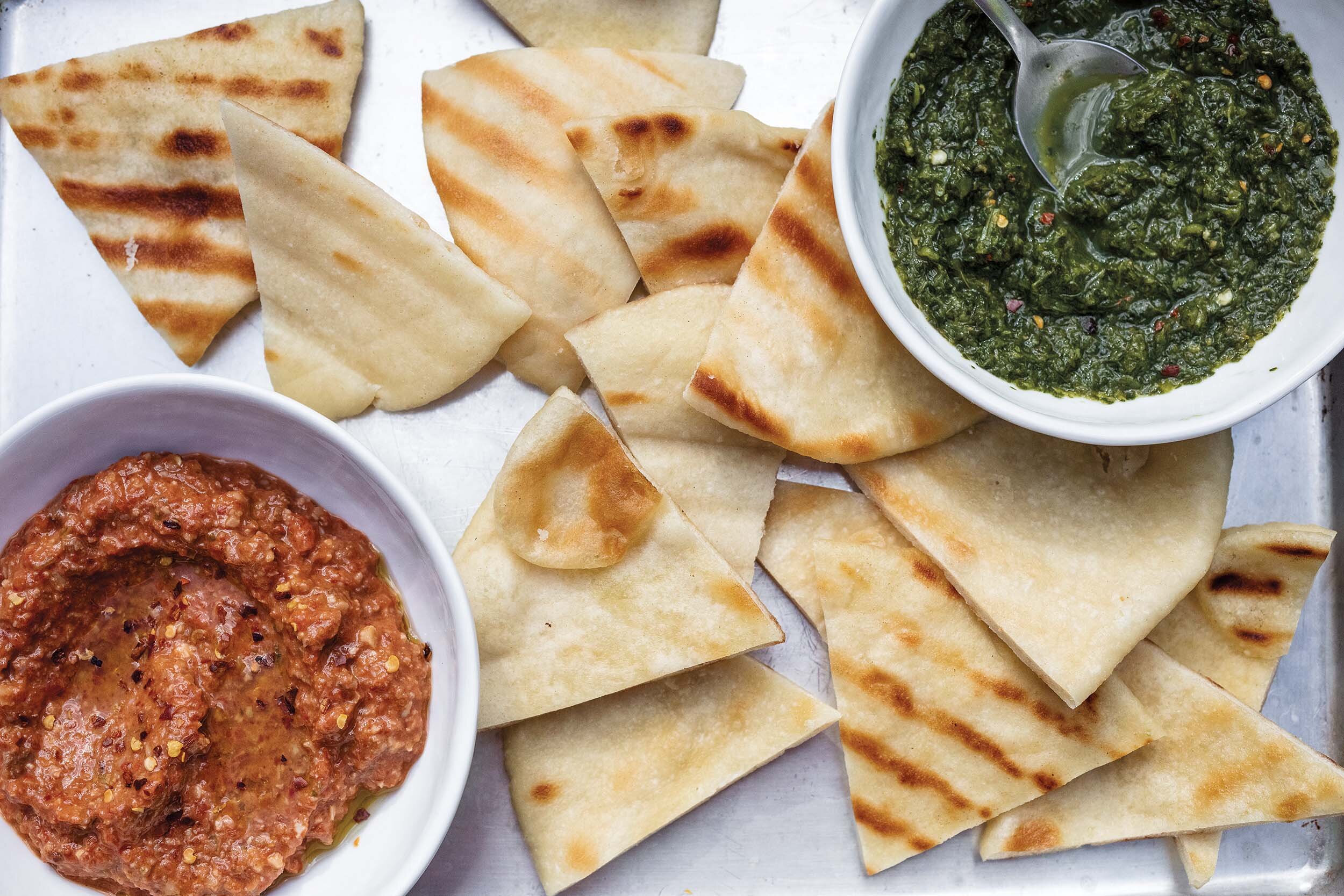Sourdough Pizza Crust

makes four 9-inch doughs
440 g water
130 g active starter
100 g whole wheat flour
550 g all-purpose flour
15 g salt
Activate your refrigerated starter in the morning by adding enough flour and water to yield 130 grams (ex: 30g starter + 50g flour + 50g warm tap water). Allow to rise in a warm (72°–80°) spot until doubled in size, 3–6 hours).
Mix + Rest. In a large mixing bowl, whisk together both flours to combine. Make a well in the center of the flour and add water, salt, and active starter, then mix with your hands until just combined. Cover the bowl and let the shaggy dough rest in a warm spot for 1 hour.
Knead + Rest. After the first rest, strengthen the dough by kneading in the bowl for 5 minutes. Alternately, use the sourdough “lift and fold” technique (see Edible Ohio Valley issue No. 49). Transfer the dough to a lightly oiled proofing box (see Tip below) and allow to rise for 3–4 hours until you see significant rise and/or bubbles in the dough.
Divide + Shape. After the second rise, turn the dough out on a lightly floured surface and use a bench knife to divide into four equal pieces. Without deflating the dough, gently pull and tuck each portion into a tight, smooth round.
Proof Overnight. Place the rounds back into the proofing box, cover, and refrigerate overnight (12–18 hours).
Bake Day. On bake day, remove the dough from the refrigerator and let it come to room temperature (if frozen, allow the dough to defrost and warm up). Preheat oven to 500°. On a floured surface, gently shape each portion into a 9-inch round with your hands, being careful not to deflate the dough (don’t use a rolling pin). Lightly top each pie, brush the crust with olive oil, and immediately bake for 5–6 minutes or until crust starts to brown.
Tips: A great place to keep your starter and dough warm is the oven, set at very low temperature. Your sourdough will be happy and you’ll see a steady rise at temperatures between 72°–80°. Keep the starter and the dough lightly covered to prevent drying. If your oven temp setting doesn’t go below 100°, use the oven light to maintain a gentle temperature.
Proofing box: With wetter doughs like this, 9-inch-by-13-inch covered cake pans work well, or any shallow, square baking dish with a cover (or plastic wrap).
Put some spring nutrients on your pizzas: Sautée spring greens such as spinach, asparagus, or bok choy in a little olive oil with sliced garlic. Add mushrooms.
After baking, top your pizzas with olive oil, chopped parsley and chives, a pinch of salt, and lemon zest. This array of goodness will add potassium, Vitamin C, calcium, and iron.
Julie publishes Edible Ohio Valley with her family. After 15 years in the world of commercial photography, her lens is now focused on recording the sustainability movement in the Midwest. A graduate of UC’s College of Design, Architecture, Art, and Planning, she’s a partner and co-founder of The Fairview Agency, a multidisciplinary creative firm.





